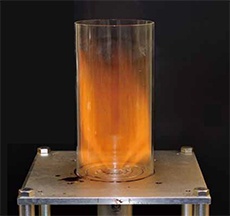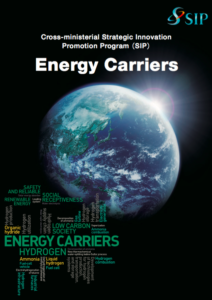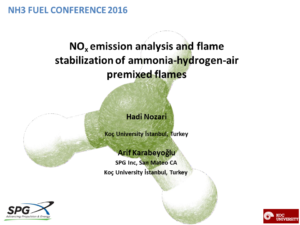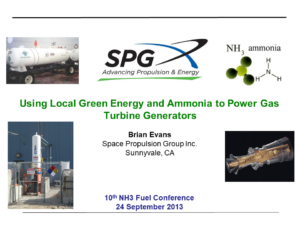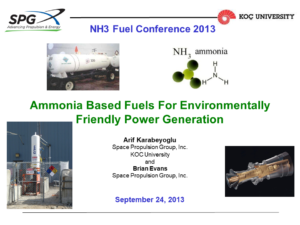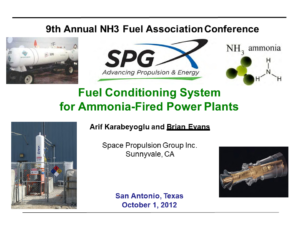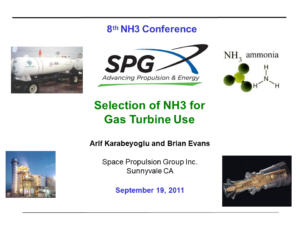Content Related to Space Propulsion Group
Efficient and Clean Combustion of Ammonia-Hydrogen-Air Mixtures
Advances in Ammonia-Fired Gas Turbines Open Up Major Use Case
In the last 12 months ... Researchers seeking to fire gas turbines with ammonia made significant strides toward realization of commercial-scale machines in both the U.K. and Japan. This means that electricity generation has become a realistic near-term use-case for ammonia energy.
Ammonia Turbine Power Generation with Reduced NOx
A common concern with ammonia fuel is that NOx emissions will be too high to control. However, in new research from Turkey, USA, and Japan, presented at this year's NH3 Fuel Conference in September 2016, two things became clear. First, NOx emissions can be reduced to less than 10ppm by employing good engineering design and exploiting the chemical properties of ammonia, which plays a dual role as both the fuel and the emissions-cleanup agent. Second, the deployment of ammonia-fueled turbines for power generation is not only feasible, but actively being developed, with demonstration units running today and improved demonstration projects currently in development.
NOx emission analysis and flame stabilization of ammonia-hydrogen-air premixed flames
Using Local Green Energy and Ammonia to Power Gas Turbine Generators
Fuel Conditioning System for Ammonia-Fired Power Plants
Selection of NH3 for Combustion Turbine Use
